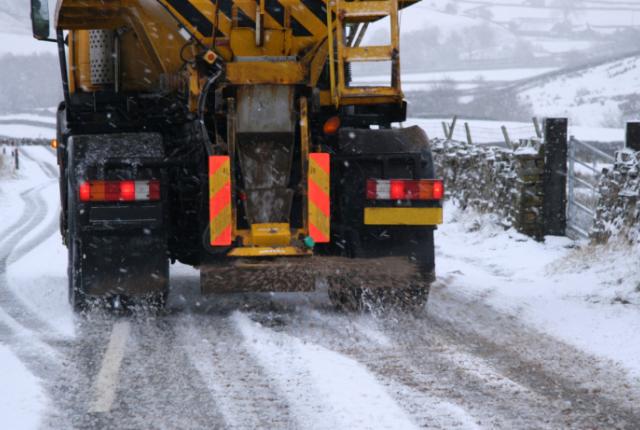Why is Salt used on Icy Roads? (Chemistry Explained)
When winter starts rearing its ugly head, it’s time to get out those scarfs and hats, boots and mittens, shovels and salt. Winter doesn’t just bring a chill to your bones and a rosy flush to your face, it also brings dangerous, icy conditions that can make a walk to your driveway as treacherous as crossing enemy territory, and your drive to work more panic-laden than a Korean horror film.

Luckily for us here in the modern world, we have people looking out for us; specifically, the government’s highway department. Once snow is on the forecast, state and federal truck drivers get ready to brave to winter roads in order to keep everyone else safe on icy roads. The go-to solution? Salt.
Why is Salt used on Icy Roads?
The main reason that salt is the particle-of-choice for wintery conditions is that salt will lower the temperature at which water freezes. Regular water will freeze solid once temps hit 32 degrees Fahrenheit; add salt to the water and you buy yourself as many as 30 degrees before the water will freeze. Salted water has been known to stay liquid even down to temperatures of 2 degrees Fahrenheit (though, to be fair, 20 degrees is more realistic).
There’s absolutely zero difference between the salt that gets poured all over the road and the salt you pour all over your French fries, except for size. Road salt has much larger crystals than table salt.
Don’t believe it? Try it for yourself; take some rock salt or ice salt and pour it into a container of freezing water. The water will soon cease its freezing and actually begin to melt around each crystal of salt.
What happens when you put salt on ice?
When you put salt on ice, the ice will melt faster. This is because the salt dissolves into the water of the ice cube. Now salt water freezes at a lower temperature than the 32 degrees Fahrenheit at which fresh water freezes. The difference between the outside air temperature and the freezing point of salt water is greater than the difference between the outside air temperature and the freezing point of fresh water. This makes the ice with salt on it melt faster.
